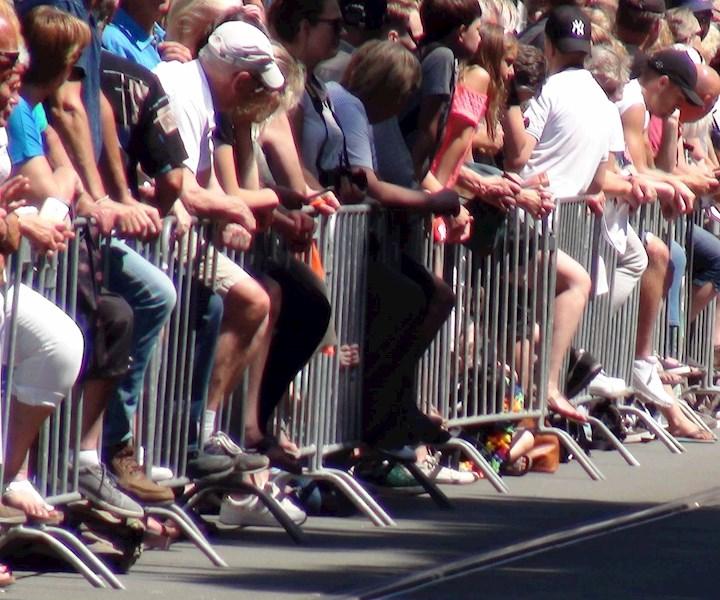10. Crowded Places: Prevention of hostile vehicles


New Zealand Police’s ‘Protecting Our Crowded Places from Attack: New Zealand’s Strategy’ provides guidance to venue operators and event organisers in relation to protecting staff and visitors from armed attacks. In this series of posts, FIRST Security’s COO Steve Sullivan looks at how you can implement the strategy and keep your people safe.
In my last post, I wrote about the Security Audit Tool that forms part of the Crowded Places strategy. Specifically, I discussed its audit questions around the security of ‘access points’.
The audit is designed to assist owners and operators of crowded places to check which security matters are relevant to the type, size and risk profile of their site, and its attractiveness to would-be attackers; identify any security gaps that need to be resolved, and create an action plan to resolve them.
In this post, we continue our look at the strategy’s Security Audit Tool, this time in relation to the prevention of hostile vehicles.
The document’s ‘prevention of hostile vehicles’ checklist lists 12 questions that require a ‘yes’, ‘no’ or ‘n/a’ answer. In the main, they cover issues that will be different depending on whether your venue has a perimeter that is: (i) static and permanent; or (ii) moving and temporary. Let’s explore some of these questions.
From the outset, it is important to stress that hostile vehicle mitigation (HVM) is a specialised area, and if it’s an area you need to tackle then you should seek professional advice. This post provides at best a partial and superficial introduction.
Static and fixed perimeters
Are there vehicle safety barriers at your location or event that keep unauthorised vehicles at a safe distance?
I suggest the Hostile Vehicle Guidelines for Crowded Places (part of Australia’s crowded places strategy published by the Australia New Zealand Counter Terrorism Committee (ANZCTC)), is a good place to start when it comes to HVM and the deployment of vehicle safety barriers.
According to that document, a “hostile vehicle is generally one whose driver is determined to access a restricted or unauthorised area or location in order to cause injury/death to people, disrupt business or effect publicity for a cause. A hostile vehicle may be used to carry an explosive device or the vehicle itself, travelling at speed, may present the primary danger.”
There’s a lot to take into account when considering HVM measures, including, budget, health and safety, traffic management, pedestrian and traffic throughput, access for less mobile persons, aesthetics, and resource consent. It can be expensive (and sometimes unnecessarily so), and there are potential solution pitfalls.
There’s also arguments around active versus passive vehicle security barriers. For active Vehicle Security Barriers (such as rising bollards), apart from installation costs other costs include training, service and maintenance, and potential civil and drainage works. It can add up.
Stairs will stop most but not all vehicles and can be used to add a level of protection to high- pedestrian areas or gathering points. Their main use is in mitigating out of control vehicles, or slowing down determined vehicles; they may also act as a visual deterrent (target hardening).
Depending on the nature of your venue, the Australian document recommends that a risk management plan, including a vulnerability assessment, be conducted “to understand what impact the functional needs of the space has on the proposed HVM measures.” Specialist help is advisable.
But perhaps most important of all is that any barriers are spaced apart to a measurement that is less than that of a vehicle width. No point investing in barriers if a hostile vehicle can pass between them. The incidence of poorly spaced barriers is alarming.
The Centre for the Protection of National Infrastructure’s (UK) Hostile Vehicle Mitigation guidance states that a range of options can be incorporated into the design of a robust HVM strategy:
- Principles of hostile vehicle mitigation - determine the aims of the HVM strategy and how it will integrate with other site security measures
- Traffic calming - can be used to limit vehicle approach speeds to a manageable level
- Vehicle Security Barriers (VSB) - provide proven vehicle impact protection and maintain blast stand-off.
- Traffic management - when and how legitimate traffic will access the site
- Vehicle access control - consider deployment of active VSB solutions, access procedures, long term operational management and emergency access
Moving and temporary perimeters
If your event moves (such as a fun run or parade), do you conduct lastminute checks to make sure safety barriers are in the right places and haven’t been tampered with?
For some events, such as fun runs, all the safety barriers you could possibly get your hands on are unlikely to protect the entirety of a course… and nor should they need to. A well-informed risk management plan will assist in identifying optimal locations for barriers and suitable barrier types.
According to the ANZCTC document, it makes sense to select venues that contain existing natural barriers, e.g. large boulders, well established dense trees lines, natural berms, steep slopes, ditches, running rivers, creeks or other water features, or otherwise areas not readily accessible by vehicles at speed. Apart from safety dividends, this can reduce the cost of hiring re-deployable vehicle barriers.
It is important to note that fences do not provide an effective barrier against hostile vehicles. Fences are easily breached by vehicles at low speeds and should only be used where vehicle speed is restricted by terrain or approach.
It’s also important to note that some portable barriers (especially those that are surface mounted) – like fences – provide no real barrier to a hostile vehicle, while others perform at differing levels.
Coming up...
In my next crowded places post, I’m looking forward to exploring ‘security at the perimeter’ as we continue our look into the Security Audit Tool.
As always, if you’d like to have a discussion about how to keep your staff and visitors safe, feel free to contact me at steven.sullivan@firstsecurity.co.nz

